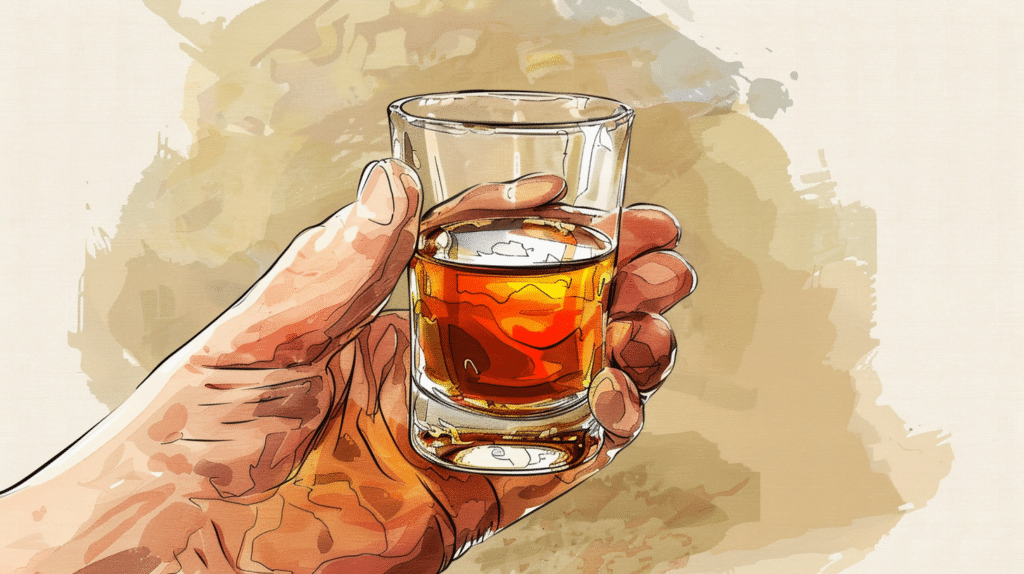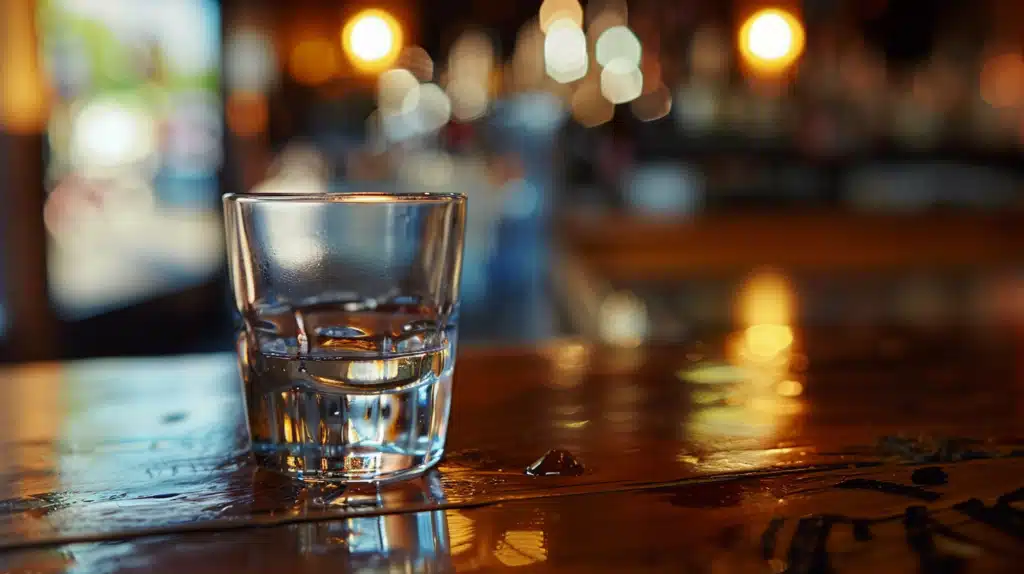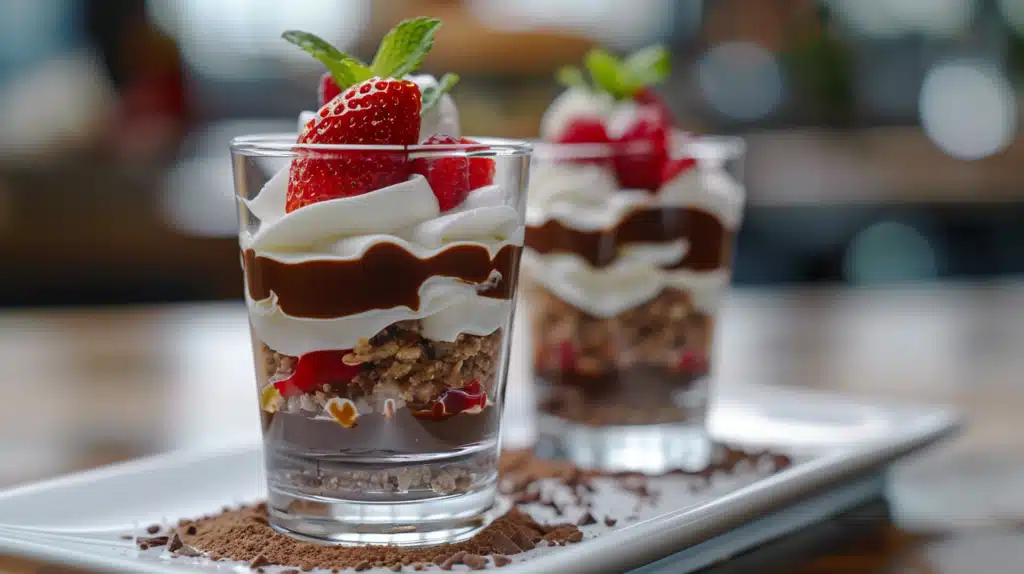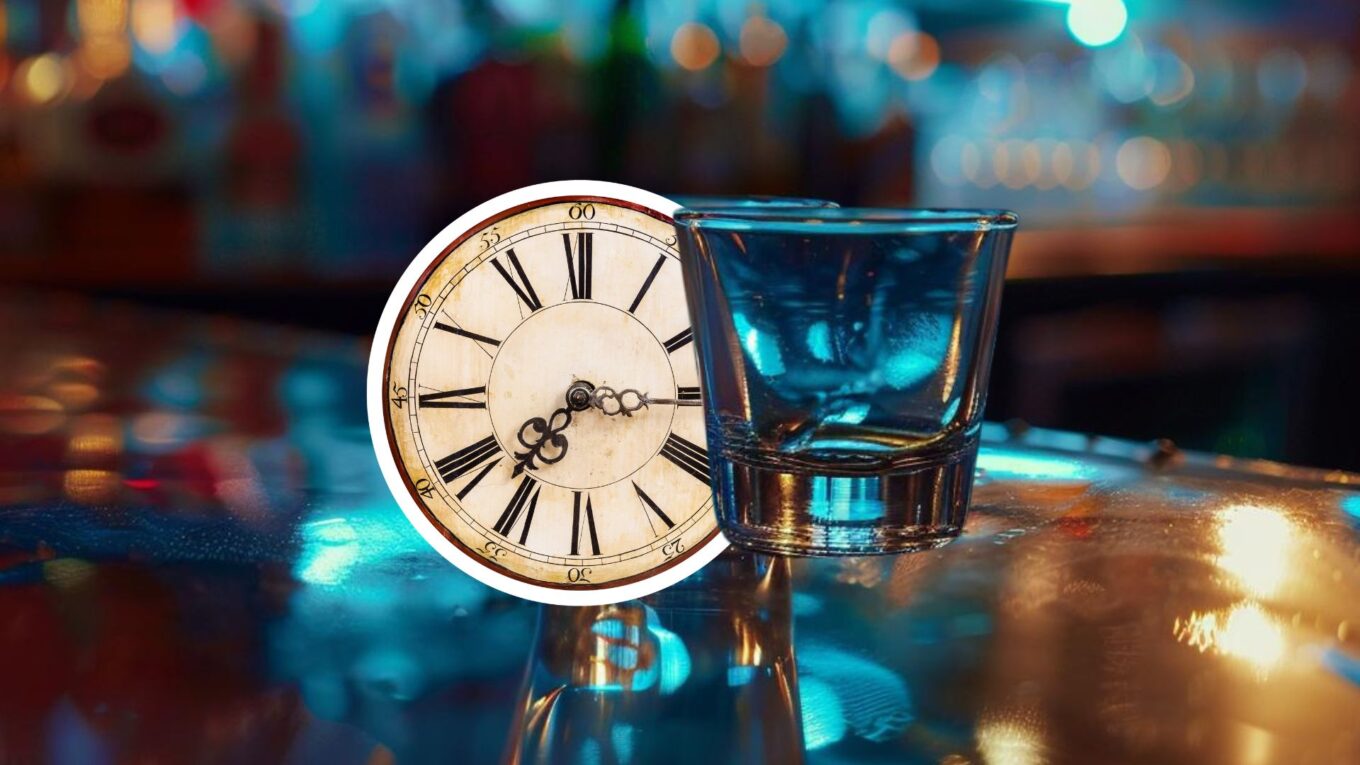Have you ever wondered why shot glasses come in different sizes?
It’s puzzling how a single shot can vary from one country to another.
The history of shot sizes is a fascinating topic rarely explored in depth. In this blog post, we’ll examine how shot sizes have evolved over time and across cultures.
We’ll uncover the reasons behind the variations and illuminate the intriguing origins of this beloved drinking vessel.
From the early days of bartending to modern-day standards, join us on a journey through the captivating world of shot glasses and discover the surprising facts behind their sizes.
Origin of the Shot Glass and Its Historical Uses

Shot glasses, the small but mighty vessels that hold our favorite spirits, have a rich history dating back centuries.
While the exact origin of the shot glass is somewhat murky, it’s clear that these miniature drinking companions have been around since at least the 1700s.
Early shot glasses were made from wood, bone, and animal horns before eventually transitioning to the glass we know today.
These early shot glasses were popular in taverns and saloons, where they were used to serve small amounts of liquor to patrons.
In some cultures, shot glasses also played a role in special ceremonies or rituals, such as wedding toasts or religious events.
Evolution from Early Measurements to Modern Standards

As shot glasses gained popularity, the need for standardized measurements became apparent. In the early days, shot sizes varied widely from region to region and even from one establishment to another.
This lack of consistency made it difficult for bartenders to create uniform drinks and for patrons to know exactly how much alcohol they consumed.
Over time, countries and states began to formalize shot measurements. For example, in the United States, Utah legally defined a shot as 1.5 fluid ounces (44.3 ml) in the 1980s.
These standardizations helped to bring more consistency to the bar and alcohol industry, making it easier for businesses to operate and for consumers to make informed choices.
Shot Glasses Across Different Cultures and Eras

Shot glasses have undergone significant changes over the centuries.
In the 1600s and 1700s, shot glasses were often made from pewter or silver and featured intricate designs or engravings.
By the 1800s, glass had become the material of choice, with thicker, more durable glasses gaining popularity after Prohibition in the United States.
The Victorian era saw the introduction of more decorative shot glasses featuring etched patterns or colorful designs.
Cultural traditions have played a significant role in shaping the use and design of shot glasses worldwide.
In Russia, for example, vodka is often served in small, straight-sided shot glasses called “stopki,” designed to be emptied swiftly.
In Mexico, tequila is traditionally served in a “caballito,” a taller, thinner shot glass that showcases the spirit’s color and aroma.
In the Netherlands, the tradition of drinking Genever, a type of gin, involves using a tulip-shaped glass filled to the brim.
The drinker is expected to bend down and take the first sip without using their hands, a ritual that enhances the aroma and flavor of the spirit.
Comparative Analysis of Shot Sizes in Different Countries
| Country | Typical Shot Size | Shot Glass Style | Additional Notes |
|---|---|---|---|
| USA | 1.5 oz (44 mL) | Standard, tall | Utah has standardized this measurement for regulatory purposes. |
| Germany | 20 mL – 40 mL | Traditional, tall | Often served with beer as a chaser in a separate glass. |
| Australia | 30 mL (Standard) | Standard, cheater | Some bars offer a “double” that is exactly two standard shots. |
| Japan | 30 mL – 60 mL | Small, ceramic, or glass | Often used for sake as well as stronger spirits. |
| Russia | 50 mL | Thick glass, cylindrical | Vodka is traditionally consumed without mixers, neat from the shot glass. |
| Mexico | 35 mL – 45 mL | Standard, sometimes decorative | Tequila is often sipped from a shot glass, not necessarily downed in one go. |
| United Kingdom | 25 mL (Standard), 35 mL (Large) | Standard, tall | Pubs are legally required to serve shots in these standardized measures. |
| Netherlands | 35 mL | Tulip shaped | Genever (Dutch gin) is traditionally served in this type of glass. |
| Canada | 44 mL (1.5 oz) | Standard | Similar to US standards, it is often served in various novelty glasses in tourist areas. |
| Italy | 30 mL | Small, sometimes ornate | Often used for digestifs like limoncello post-meal. |
Standard Measurements in Shot Glasses
1. How Many Ounces in a Shot?
When it comes to the question, “How many ounces in a shot?” the answer can vary depending on where you are in the world.
While there is no universally accepted standard shot size, in the United States, a shot is typically considered 1.5 fluid ounces (44 milliliters).
However, this is not a legal requirement, and shot sizes can range from 1.25 ounces to 2 ounces, depending on the establishment or region.
In Australia, a standard shot is generally smaller, measuring 30 milliliters (1.01 ounces), while in some European countries like Italy and France, a shot might be closer to 50 milliliters (1.7 ounces).
Cultural preferences, historical traditions, and local alcohol laws influence these variations in shot sizes.
2. How Many Ounces in a Double Shot?
A double shot is, as the name implies, twice the volume of a single shot. So, in regions where a standard shot is 1.5 ounces, a double shot would typically be 3 ounces (88 milliliters).
However, as with single shots, there is no universal standard for a double shot, and the exact volume can vary from one establishment to another.
In some bars, a double shot might be slightly less than twice the volume of a single shot, perhaps 2.5 ounces instead of a full 3 ounces.
This lack of standardization can affect the price and alcohol content of drinks, as a cocktail made with a double shot will have more alcohol than one made with a single shot, but the exact difference can vary.
It’s important for bartenders and patrons alike to be aware of these variations to ensure responsible alcohol consumption and fair pricing.
Technological and Material Advances

While traditional shot glasses were primarily made from standard glass, advancements in material science have led to using a broader range of materials in shot glass production.
Today, shot glasses are in crystal, tempered glass, plastics, and metals like stainless steel or copper.
Each material offers unique benefits and aesthetic qualities.
Crystal shot glasses, for example, are known for their clarity and elegance, making them a popular choice for upscale bars and special occasions.
Tempered glass, on the other hand, is more durable and resistant to breakage, making it ideal for high-volume bars or outdoor events.
Plastic shot glasses are lightweight and shatter-resistant, making them suitable for poolside bars or large festivals.
Metal shot glasses, such as those made from stainless steel or copper, have gained popularity recently due to their durability and unique thermal properties.
These materials can help keep drinks colder for longer, enhancing the tasting experience for certain spirits or cocktails.
Types of Shot Glass
| Type | Description | Usage | Additional Features |
|---|---|---|---|
| Standard Shot Glasses | The most common type used in bars worldwide. | Serving standard shots of spirits. | Minor variations in design and capacity. |
| Tall Shot Glasses | Taller and often narrower than standard glasses, varying in height and volume. | Mixed shooters or layered shots. | Benefits include better layering of ingredients. |
| Cheater Shot Glasses | Thicker base or walls to create the illusion of more liquid. | To give the illusion of a full glass while serving less. | Ethical concerns discussed in bar settings. |
| Fluted Shot Glasses | Features a wider rim and decorative fluting. | Tasting and sipping fine spirits enhances aroma. | Popular in regions with traditional spirit ceremonies. |
| Novelty Shot Glasses | Creatively designed with unique shapes (e.g., animals, landmarks). | Collectibles or tourist souvenirs. | More for display than practical drinking purposes. |
| Specialty Shot Glasses | It is designed for specific drinks or purposes, like double shots or espresso. | Precise serving sizes for particular beverages. | Made from various materials like glass, crystal, or metal. |
Usage of Shot Glasses Beyond Alcohol

Shot glasses have found uses beyond just serving alcohol, showcasing their versatility in both culinary and collectible contexts.
In the culinary world, shot glasses are often used to present small portions of appetizers, desserts, or amuse-bouches.
These “food shots” can be a creative way to serve bite-sized portions of gazpacho, mousses, or even mini-cocktails as part of a tasting menu or catered event.
Shot glasses have also become popular collectibles, with many enthusiasts seeking out rare, vintage, or unique designs.
Collectors might focus on shot glasses from a specific era, such as pre-Prohibition or mid-century modern, or they might collect glasses with specific themes or from particular regions or events.
Some shot glass collectors specialize in acquiring glasses from hard rock cafes, sports teams, or other branded merchandise.
How to Measure a Shot Without A Shot Glass
While shot glasses are the most common tool for measuring shots, alternative methods can be used to ensure accurate measurements, particularly in settings where precision is important, such as in cocktail making.
1. Jigger
- Dual-sided measuring tool used by professional bartenders.
- Standard sizes include 1.5 ounces on one side and 0.75 ounces on the other.
- Variations may include 2 ounces and 1 ounce sides.
- Provides precise measurements for making cocktails.
2. Standard Kitchen Spoons
- It can be used as a rough approximation for measuring shots.
- A tablespoon typically holds about half an ounce.
- Three tablespoons equal approximately a 1.5-ounce shot.
- Less precise due to slight variations in spoon sizes.
3. Measuring Spoons
- Includes sizes such as tablespoon and teaspoon.
- More accurate for home use compared to standard kitchen spoons.
- One tablespoon equals 0.5 ounces; three tablespoons or nine teaspoons make a 1.5-ounce shot.
- Useful for cocktails and drinks requiring specific measurements.
Conclusion
The fascinating history and evolution of shot sizes reveal a complex interplay of cultural traditions, regional variations, and technological advancements.
From the early days of rudimentary measurements to the standardized sizes we know today, shot glasses have significantly influenced how we consume and appreciate spirits.
As we’ve seen, “How many ounces in a shot?” has no simple answer, with variations across countries and even within regions.
However, we can better appreciate the art and science of the perfect shot by understanding the common sizes, alternative measuring methods, and the cultural significance behind these small but mighty vessels.
So, the next time you raise a shot glass to your lips, consider the rich history and diversity of this beloved drinking tradition.




